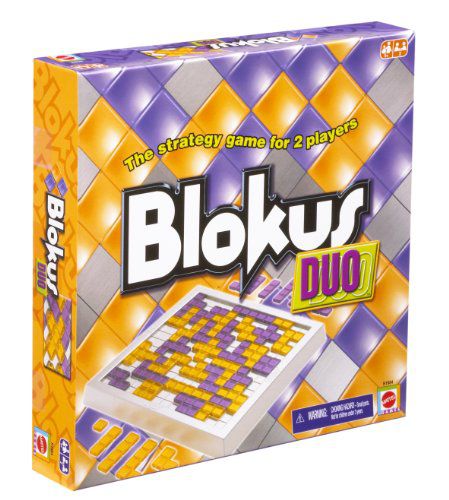

To create the game, not only did a visual interface of some sort had to be created, but the computer also had to keep track of the data. This may seem like 3 simple things to check, but this brings me to my next point: the approach I took may not have been the most simple one, but was the most logical one to my knowledge at this time. In a sentence, that rule is "you MUST connect to your piece only at the corner during your turn." In code, that translates to: 1) check to make sure the starting move is at the corner for each player, 2) check to make sure that the sides aren't touching the same color (class), 3) check to make sure the corner piece belongs to the same class. The game has only one rule, yet that one rule requires many rules or checkpoints to be established to verify that one rule.
#Free blokus online code
testing code for just one piece and then adding all the other pieces in afterwards and retesting the code).Īfter coding the pieces and their effects, the next part of the approach taken was to apply the game logic onto the board. After the creation of the game board, the next step involved "sample testing." Testing for smaller pools of data, I made sure that the code works for the sample pool before implementing the actual data (ie. Each tile or square within the game board must be uniquely identified in order to make everything possible.

In the early stages of development, the most crutial step was to set up a game board that allows the player to play on. This application uses HTML, CSS, and JavaScript (jQuery, iterators, events) to recreate the experience of playing the actual game. The only rule to the game is that you MUST connect to your piece only at the corner during your turn (you may not have your color touch its sides). In this game, players compete for territory and fight to protect their own territory against other players. I’m interested in other variants folks have thought of to keep the game fresh when you find yourself always playing the same opponent.This is a web application for the popular boardgame "Blokus". If you’re unable to make a legal move using a tile from the obstacle set, rolling a 1 or a 6 means that you simply lose your turn. Rolling a 2 – 5 means you play from your tiles normally from your starting corner. Using a “neutral” third color, the O is placed in the middle of the board and if you roll a 1 or a 6 you have to play from that third color, off of the center piece. We’ve also, to introduce some randomness, tried a variant in which you role a normal d6 at the beginning of your turn. We then play a normal C2 game having to work around the obstacles. These initial “obstacle” pieces do not touch one another. Our first variant was to have each player randomly select six pieces from a “neutral” third color and take turns distributing these around the board randomly, but generally evenly distributed. We’ve recently taken to inventing variants. My daughter and I generally play the classic 2 player blokus (C2). On May 18, 2012, a popular, polyomino-based, online game with a worldwide following, which had been in operation, off and on, since around 2003, was abruptly shut down by its corporate parent. If you have a topic you would like me to blog about (or if you have any other general questions or comments), please post a comment here, and I’ll do my best to answer it or blog about it. 2021: 30024 games (plus 29165 Tollie games) played by 234 different players. You can read about them in the Blokus Basics section – HERE. The ABSOLUTELY MOST IMPORTANT thing you need to know to begin learning about Blokus is the piece names. When they show up, I promise to file them appropriately so that you know what type of post you are reading before you start.īEFORE YOU START you should read the Blokus Basics section. (Update May 2015: I haven’t been posting puzzles for a while due to the demands of completing my PhD, but now that I’m done, you will start to see more of these again!)Įven though the site is intended for beginners, I will occasionally discuss more advanced topics as well. You can skip right to the pentobi downloads section here.

#Free blokus online software
The best way to attempt the puzzles is with the amazing (free!) blokus software pentobi. I also plan to post regular or semi-regular blokus puzzles for you to play with. This site is dedicated to the classic version of blokus, played by 2 players only (C2). The purpose of this blog is to get some Blokus: C2 strategy literature available for players who are looking for tips, and also to be a basis for a blokus strategy book I dream of writing one day.


 0 kommentar(er)
0 kommentar(er)
